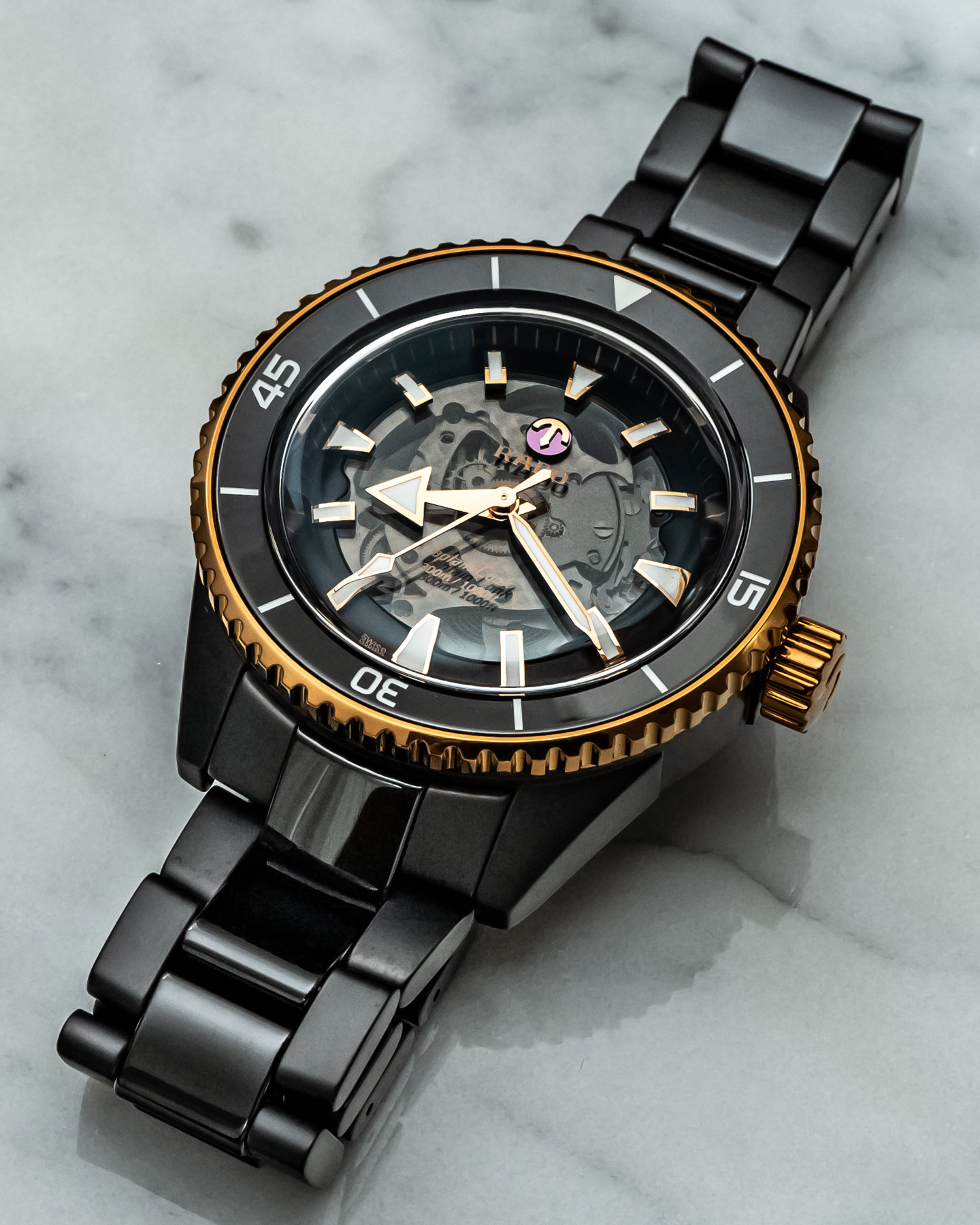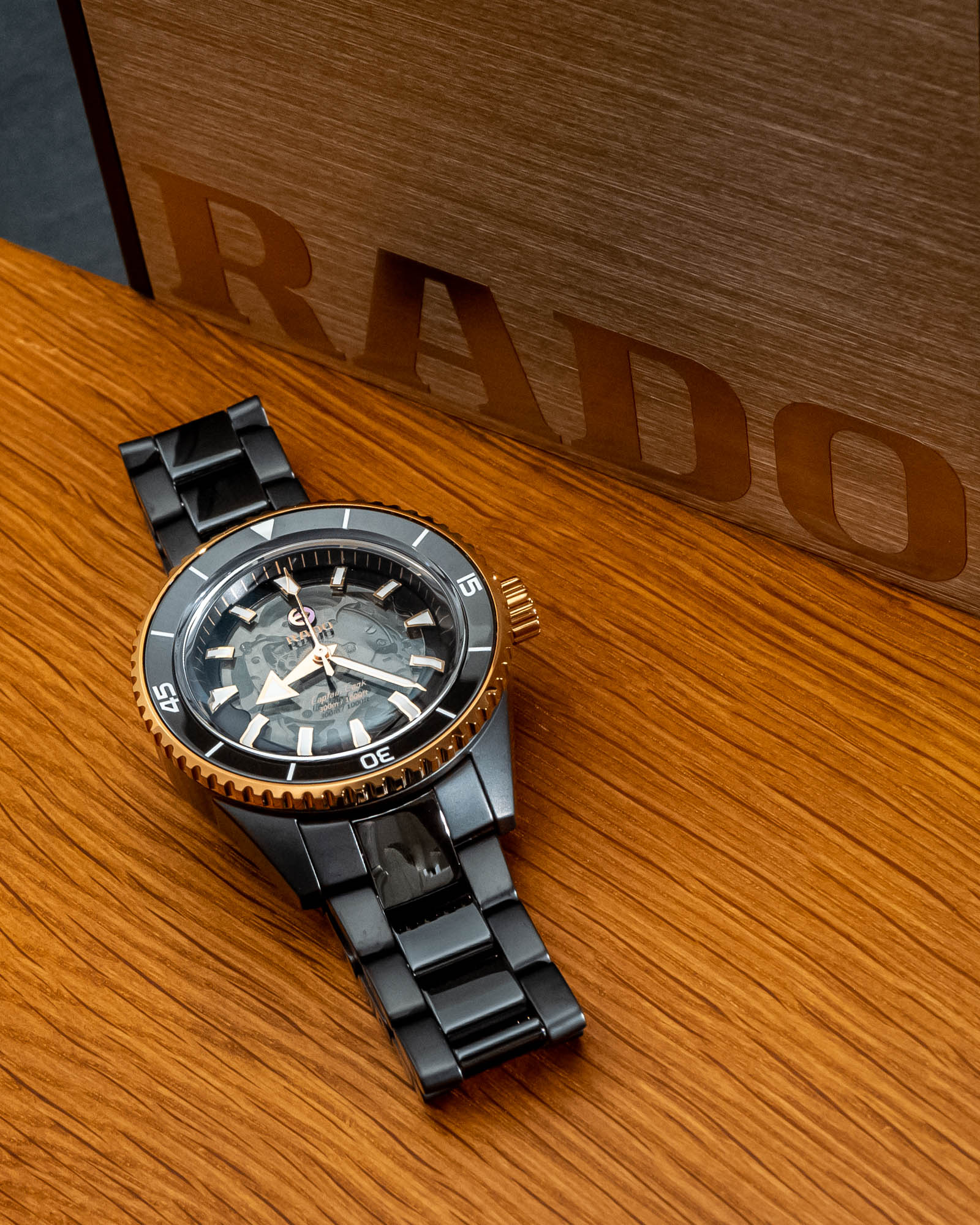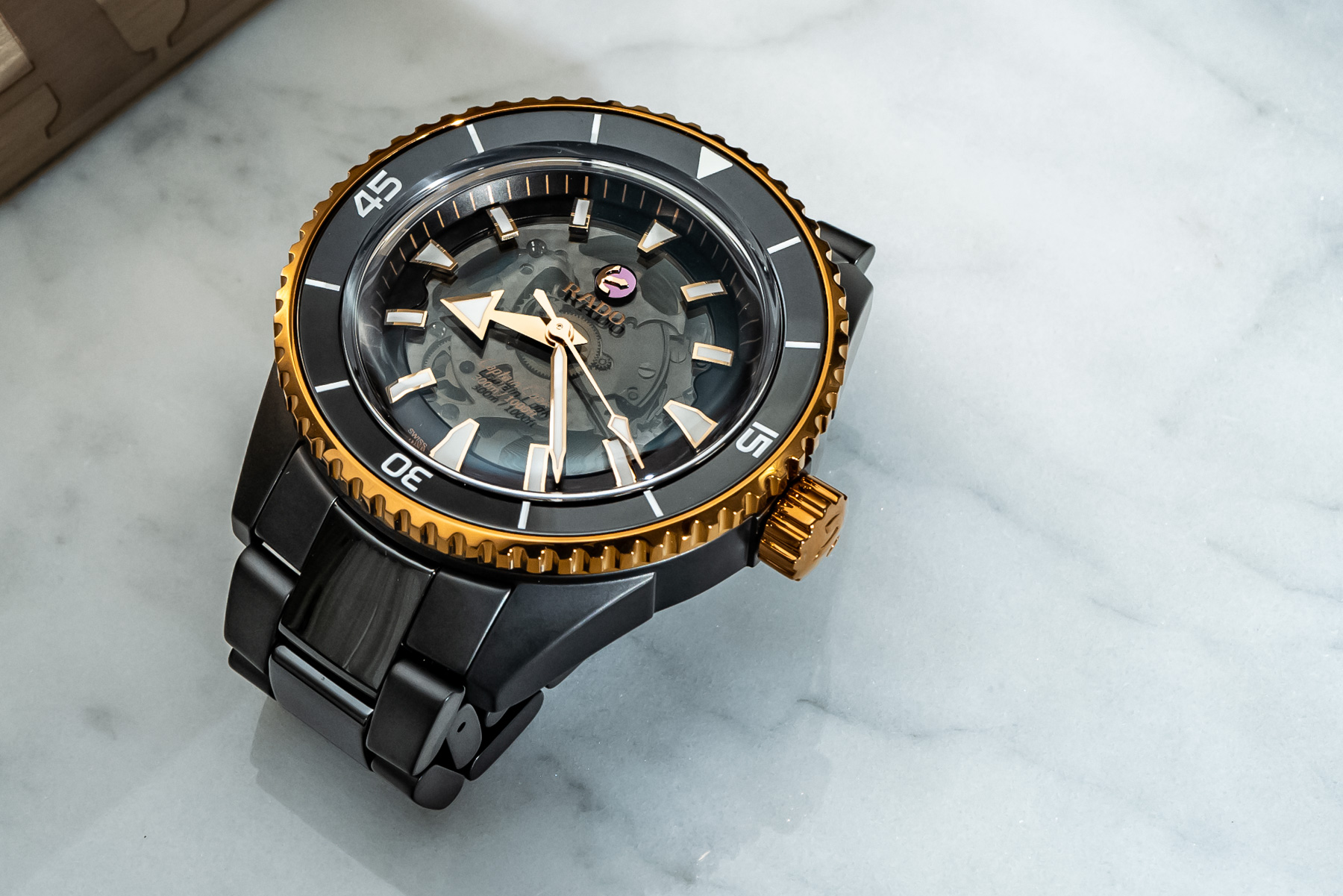
Rado has been working with ceramic for decades now, and it was only a matter of time before the breakout Captain Cook got a full high-tech ceramic case and bracelet. The new Rado Captain Cook High-Tech Ceramic takes a “best of both worlds” approach and largely succeeds in offering a luxury diver in full ceramic case and bracelet for a price just around the $4,000 mark.
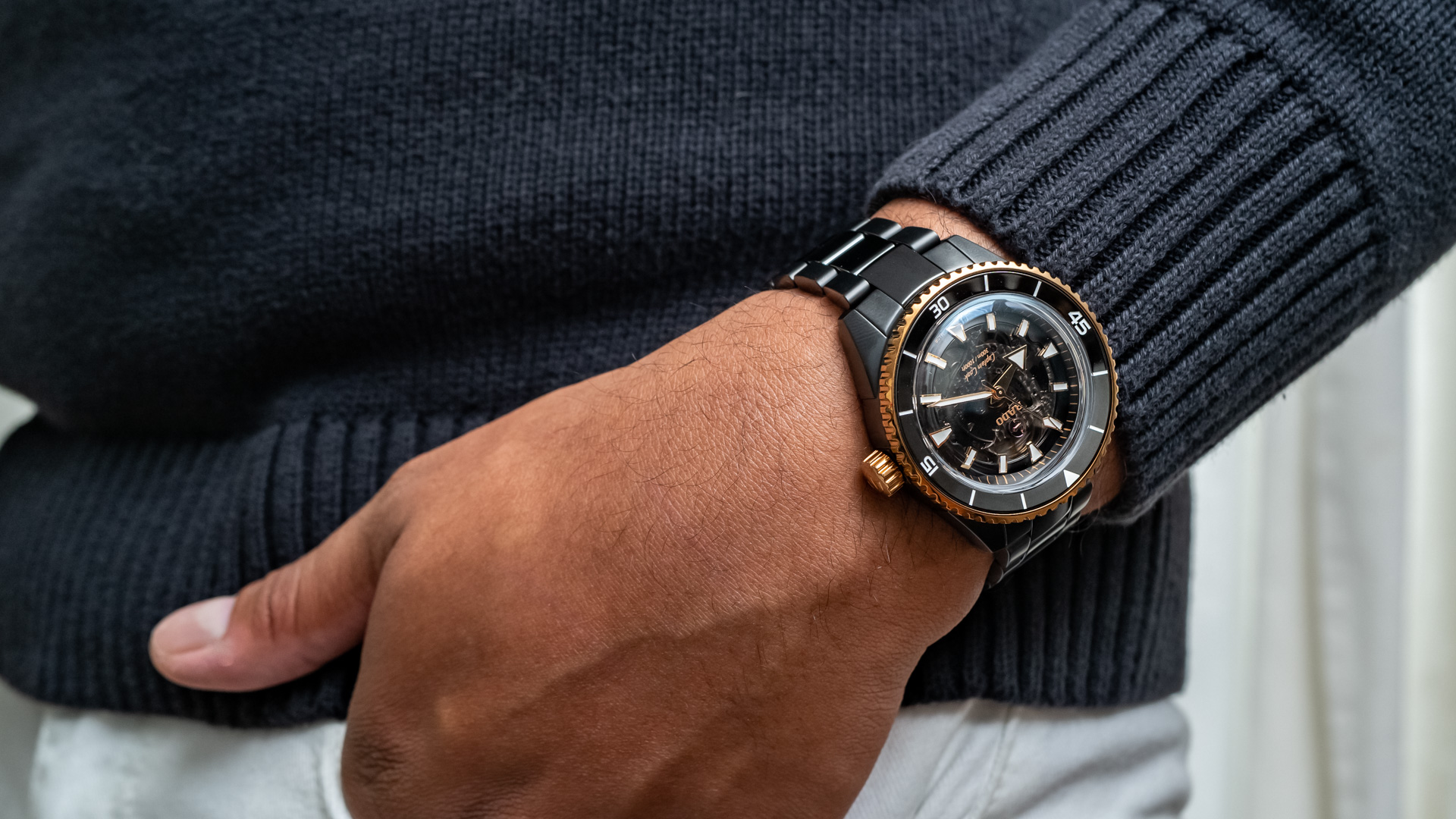
There are four introductory models of the Captain Cook High-Tech Ceramic: black high-tech ceramic case and bracelet with steel accents; black high-tech ceramic case with steel accents on strap; a plasma high-tech ceramic case and bracelet with blue accents; and the model that you see here, which is a black high-tech ceramic case and bracelet with rose-gold PVD accents. Rado has made high-tech ceramic cases and bracelets in a range of colors, like red, yellow, orange, pink, blue, and many others, so who knows what we might get in the future? Or am I the only one who would absolutely rock an all-pink ceramic Captain Cook?
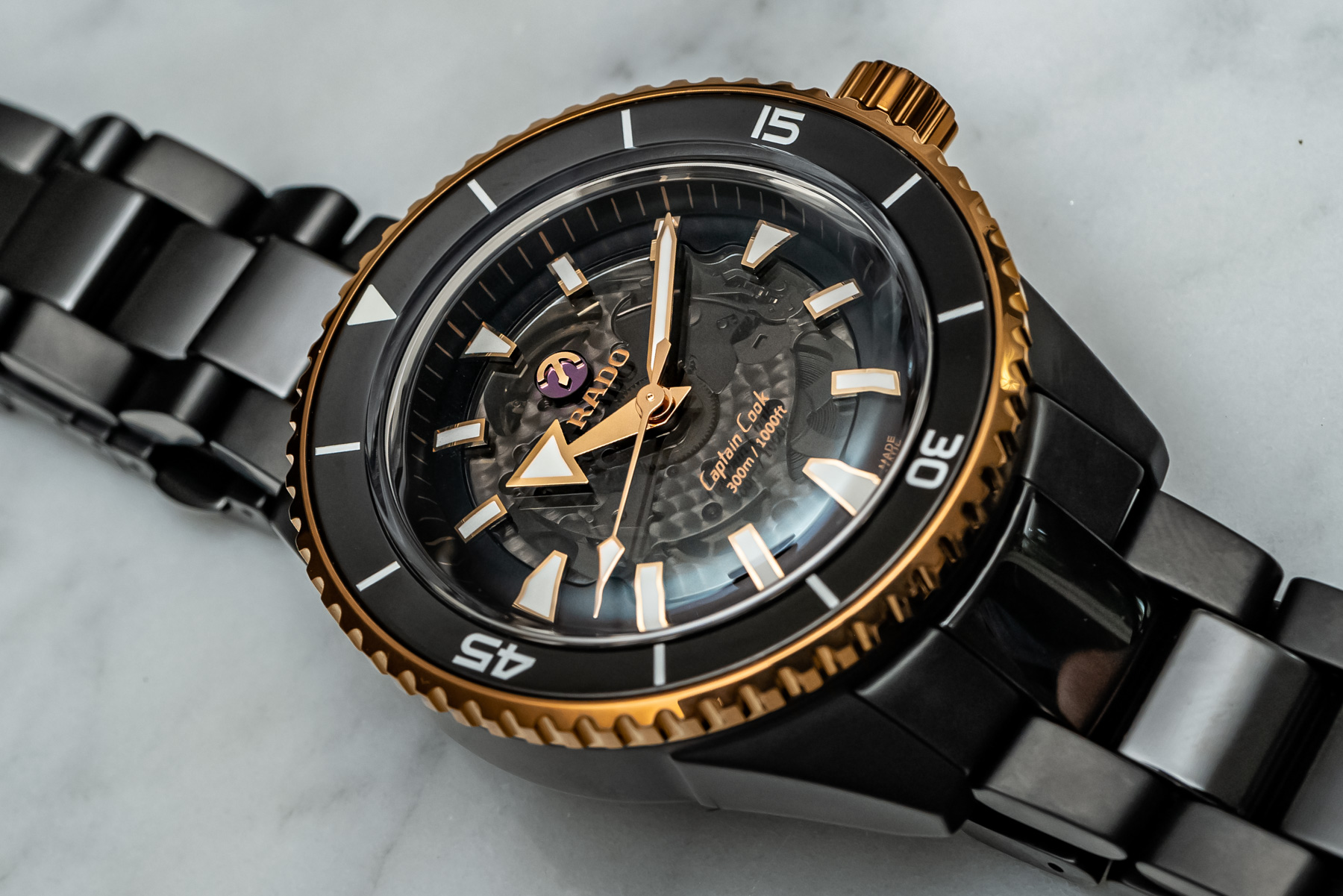
If you want to brush up on Rado’s history in working with ceramics, you can read an informative and educational piece about it right here. Ceramic is highly scratch-resistant, lightweight, hypoallergenic, and has an overall ooh-la-la factor. The downside to ceramic is one that I believe to be highly overstated, which is that it can shatter, if dropped. I’ve never heard of this happening to anyone.
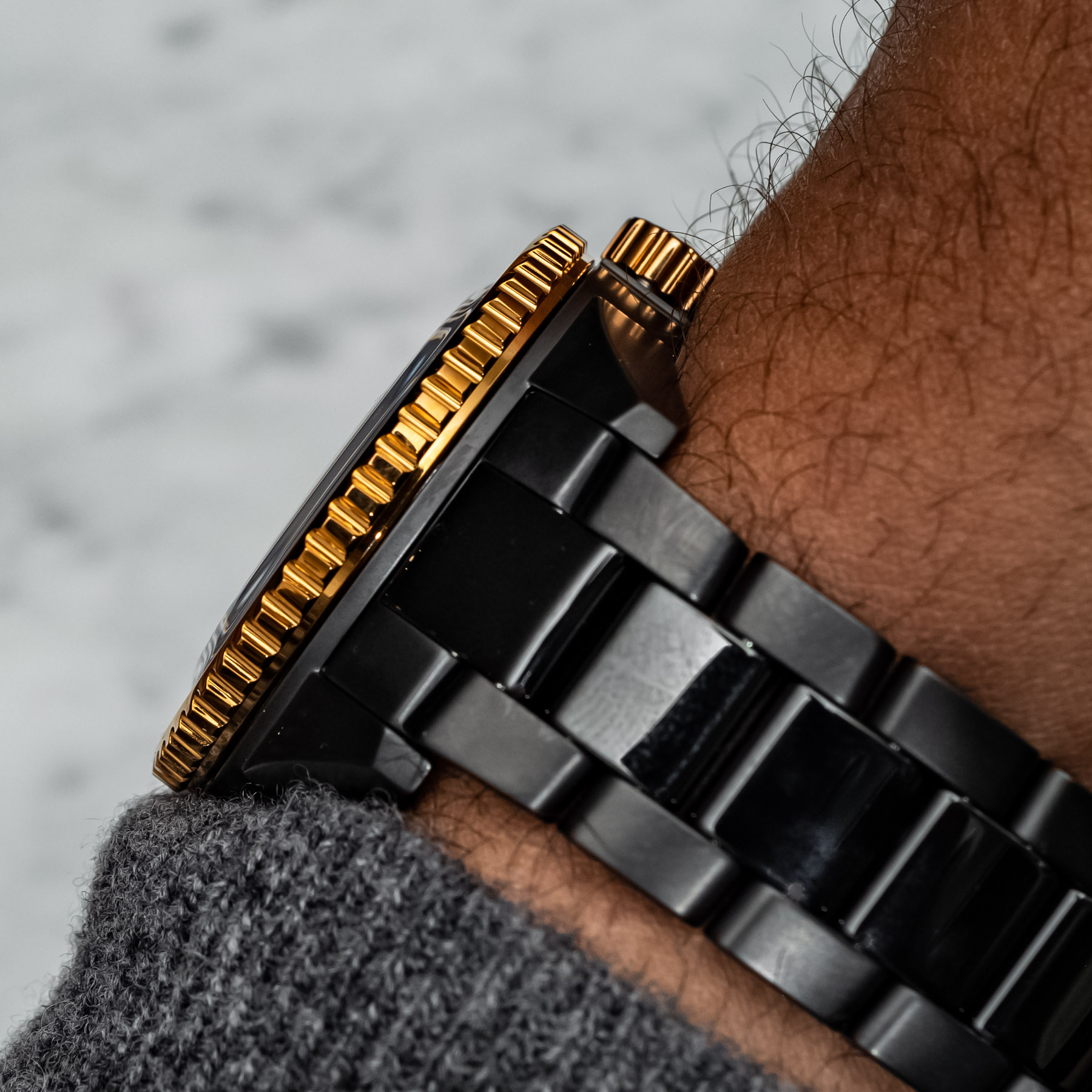
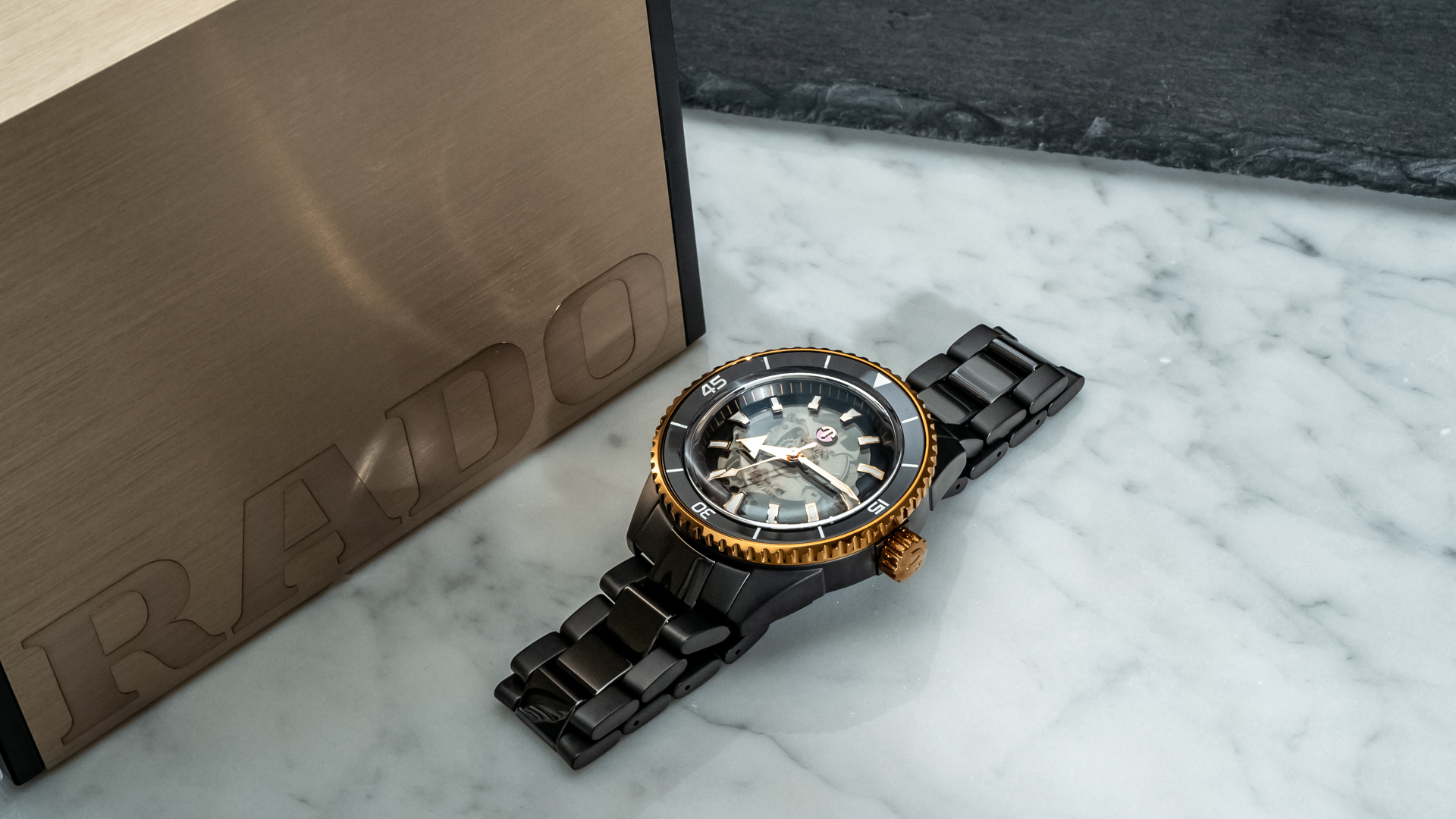
Previous iterations of the Captain Cook have come as small as 37mm and as large as 45mm, with most of the recent iterations, like the Bronze, coming in at 42mm. This High-Tech Ceramic model comes in at 43mm due to the nature of the material. Rado gave a statement explaining the need for the larger case size:
“To achieve such of construction in ceramic and being able to pass all the shock resistance tests to 5000G the ceramic needed to be rethought. The challenge was to keep the DNA of the original piece. We cannot really compare the production of a stainless steel watch case VS a ceramic watch case. The ceramic chimney to set the bezel on it needs a bigger volume. This part is more exposed to shocks. At the end, this influences the position of the “chevé” box sapphire crystal.
The screw-down crown for a ceramic case is more challenging. The tube needs to be mounted with an O-ring for the 300-meter water-resistance. Then, we can screw the crown on the tube. It takes more volume, as well. A pressed-on caseback for 300m on a ceramic case also takes some additional space in the thickness.”
So, all this is to say that the material necessitates the larger case size, and that’s just the way it is. The 43mm-wide case is 14.6mm-thick and has a lug-to-lug height of 49.8mm. In a perfect world, we could take a millimeter off the height and width, but this is a tradeoff that’s inherent to the nature of the piece.
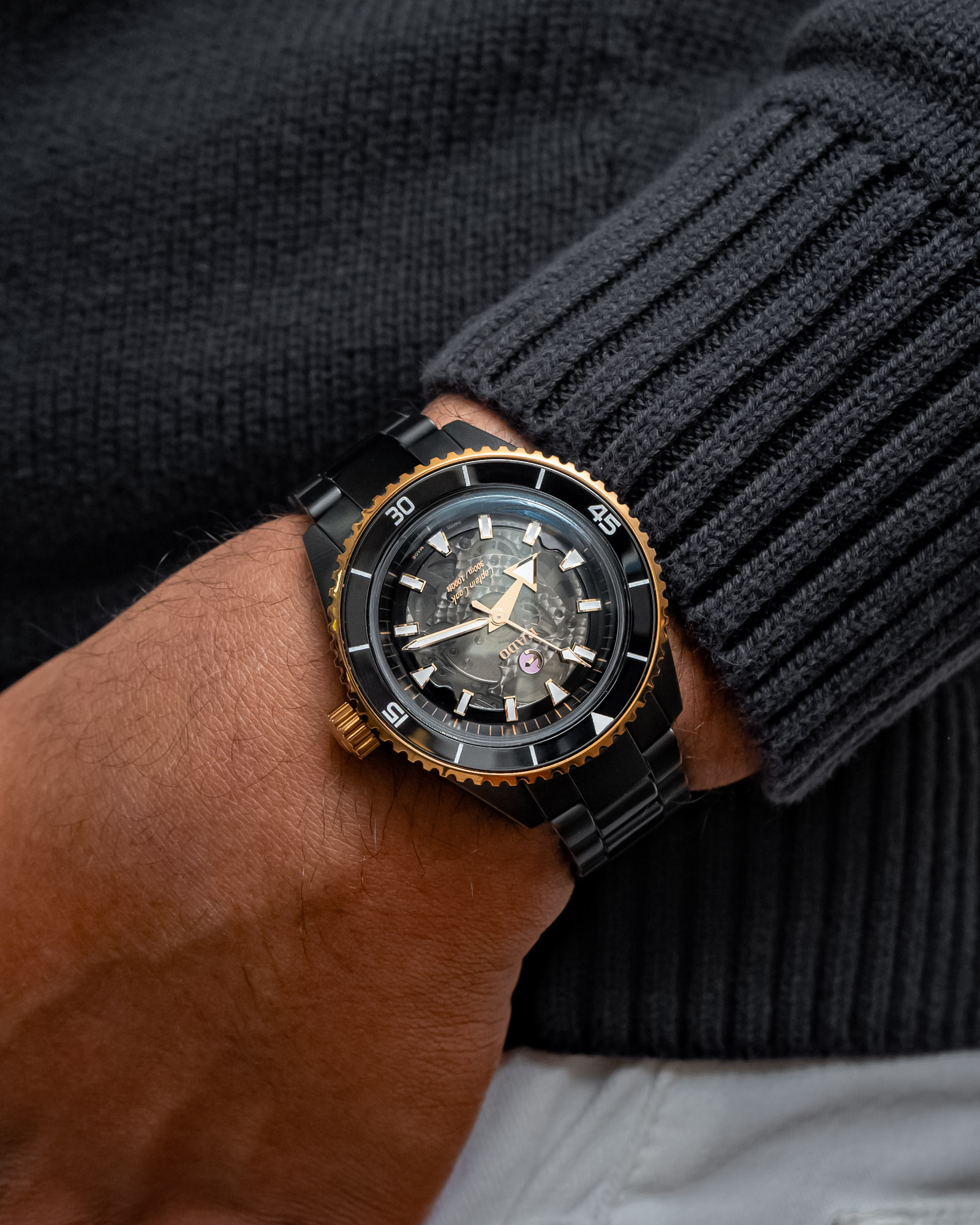
I have to say, I wasn’t sold on the two-tone black ceramic/rose-gold-coated PVD model from the early press shots, but… damn, it just looks pretty sleek in the metal (well, ceramic, not metal). This model comes on a full ceramic bracelet with matte-black outer links and polished center links. The bracelet is well-built and comfortable, and there is little out there in terms of competition at this price point. Sure, a little beveling would have been nice, but that kind of finishing on ceramic would undoubtedly come at a cost that would be passed down to the consumer.
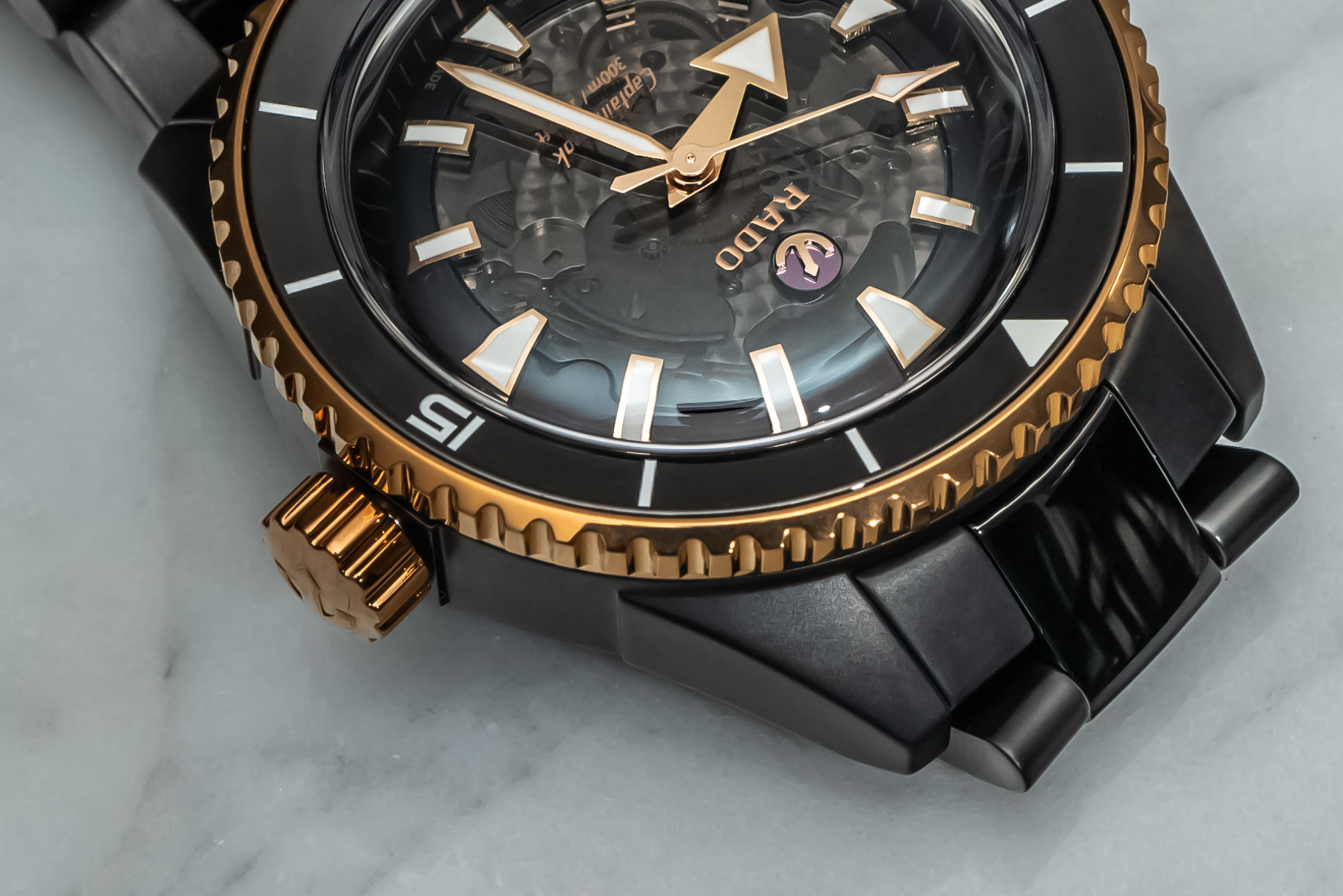

The monobloc ceramic case is all matte, but the polished red-gold coating on the side of the bezel and on the crown breaks up the monotony, though there is a version that has these case elements and the hands/indices done in steel, if the gold isn’t your speed. There’s also a plasma high-tech ceramic model, which is essentially a ceramic that has an almost soft steel color, rather than black. This one comes with a blue dial and bezel, and I wouldn’t be surprised if it ended up being a very popular model.
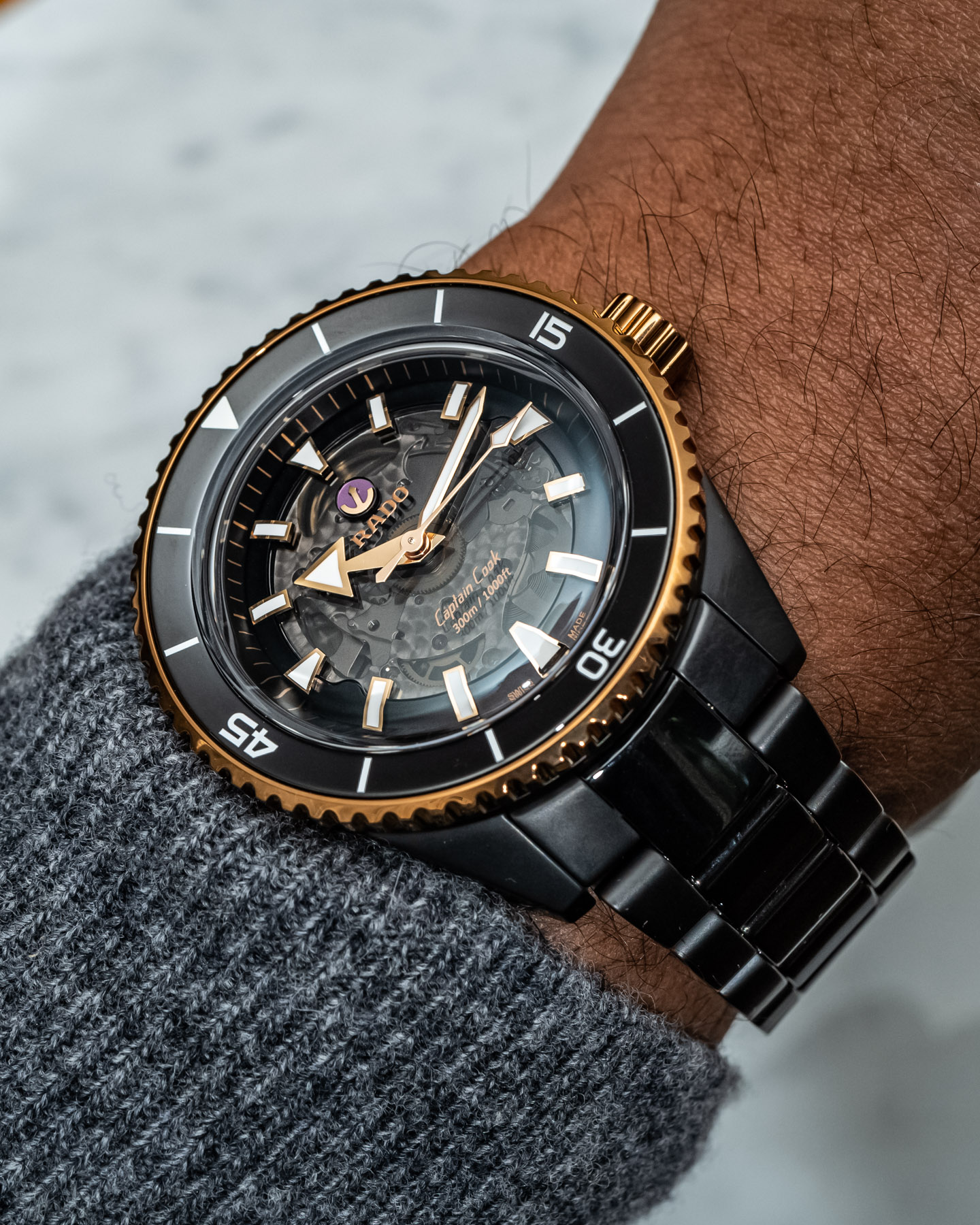
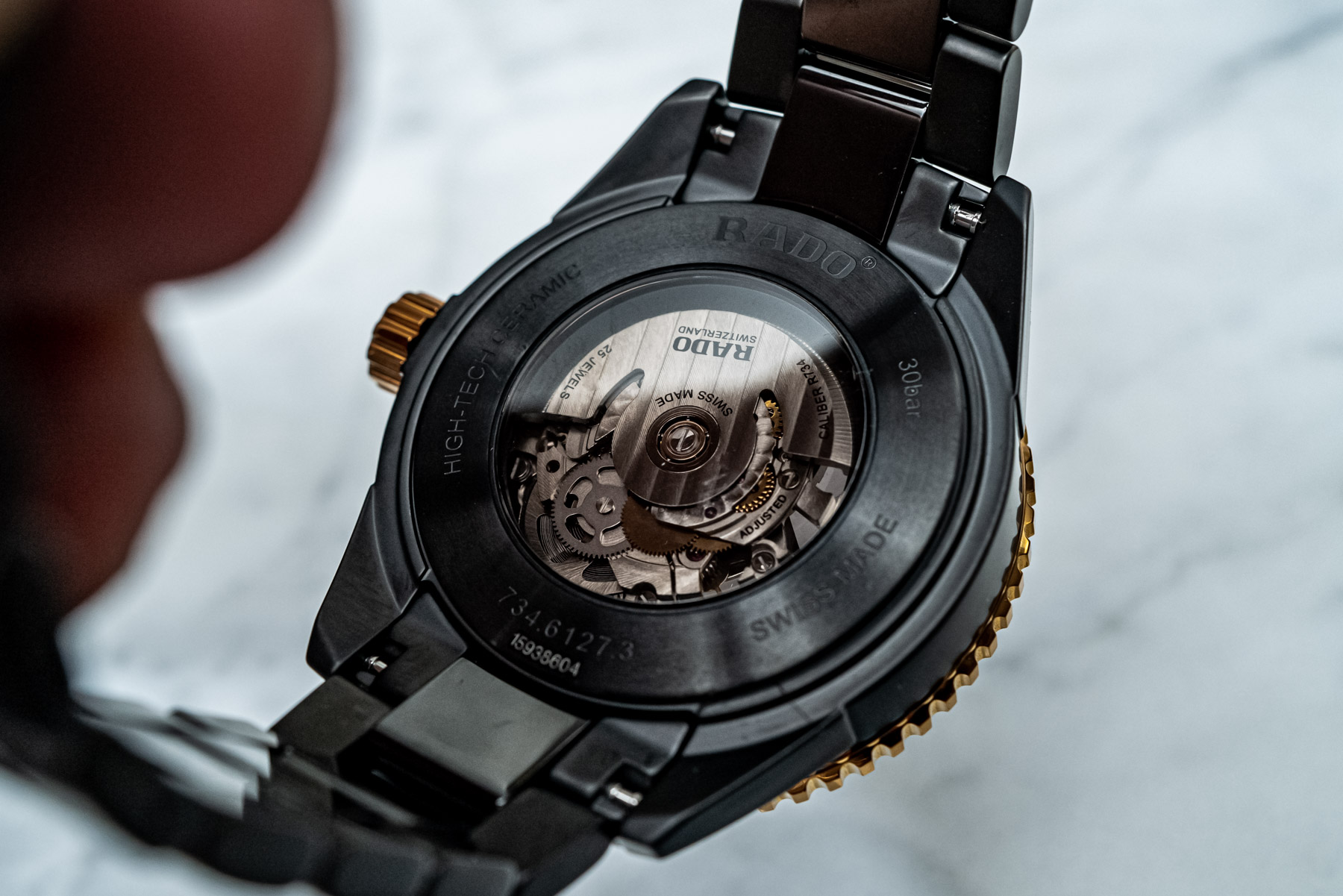
The exhibition caseback has this same tinted sapphire (which increasingly grew on me over the course of the few days I had this watch) with a view of the Rado calibre R734. With the anti-magnetic Nivachron hairspring courtesy of Swatch Group, it’s a solid modified ETA movement that has an 80-hour power reserve.

The Rado Captain Cook High-Tech Ceramic with red-gold PVD (ref. R32127162) as seen here is priced at CHF 3,700, while the plasma ceramic case model (ref. R32128202) is a bit more at CHF 3,800, and the black ceramic with steel accents is priced at CHF 3,600 on bracelet and CHF 3,300 on fabric strap. You can learn more about the collection here at rado.com.

